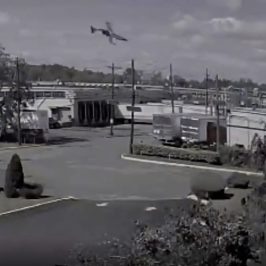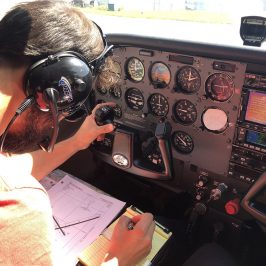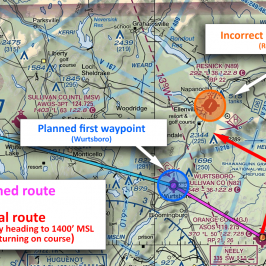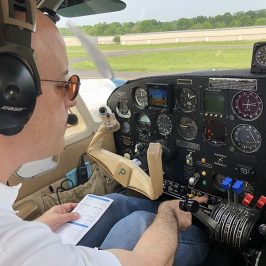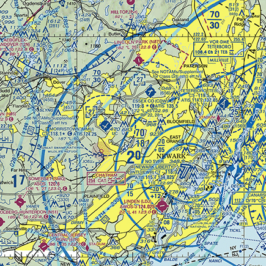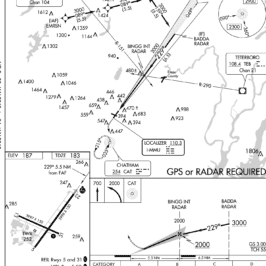It’s really not just a “checkride question.” The real world application of this knowledge is significant. We’ll get back to that shortly.
In any case, a well-prepared applicant will know intuitively how to determine this — if they’re familiar with the definitions of the various types of airspeeds. Let’s review.
Airspeed definitions
Indicated airspeed (IAS)—the direct instrument reading obtained from the ASI, uncorrected for variations in atmospheric density, installation error, or instrument error. Manufacturers use this airspeed as the basis for determining aircraft performance. Takeoff, landing, and stall speeds listed in the AFM/ POH are IAS and do not normally vary with altitude or temperature.
Pilot’s Handbook of Aeronautical Knowledge, p. 8-8
Ryan says: “It’s simply what the instrument reads, at any altitude, any temperature, makes no difference.”
Calibrated airspeed (CAS)—IAS corrected for installation error and instrument error. Although manufacturers attempt to keep airspeed errors to a minimum, it is not possible to eliminate all errors throughout the airspeed operating range. At certain airspeeds and with certain flap settings, the installation and instrument errors may total several knots. This error is generally greatest at low airspeeds. In the cruising and higher airspeed ranges, IAS and CAS are approximately the same. Refer to the airspeed calibration chart to correct for possible airspeed errors.
Pilot’s Handbook of Aeronautical Knowledge, p. 8-8
Ryan says: “It’s impossible for airspeed indicators to be precisely accurate. Especially when the aircraft is at high angles of attack, the probe will read inaccurately. Manufacturers design their aircraft so that the pitot tube, probe or mast is most accurate during cruise flight.”
True airspeed (TAS)—CAS corrected for altitude and nonstandard temperature. Because air density decreases with an increase in altitude, an aircraft has to be flown faster at higher altitudes to cause the same pressure difference between pitot impact pressure and static pressure. Therefore, for a given CAS, TAS increases as altitude increases; or for a given TAS, CAS decreases as altitude increases. A pilot can find TAS by two methods. The most accurate method is to use a flight computer. With this method, the CAS is corrected for temperature and pressure variation by using the airspeed correction scale on the computer. Extremely accurate electronic flight computers are also available. Just enter the CAS, pressure altitude, and temperature, and the computer calculates the TAS. A second method, which is a rule of thumb, provides the approximate TAS. Simply add 2 percent to the CAS for each 1,000 feet of altitude. The TAS is the speed that is used for flight planning and is used when filing a flight plan.
Pilot’s Handbook of Aeronautical Knowledge, p. 8-8
Ryan says: “It’s called ‘true’ because it’s the truth. The aircraft will actually travel through ‘space’ at this airspeed. Not to be confused with groundspeed, which is simply speed over the ground.”
No, it’s not an airspeed, but we use it in conjunction with them all the time.
Groundspeed (GS)—the actual speed of the airplane over the ground. It is TAS adjusted for wind. GS decreases with a headwind and increases with a tailwind.
Pilot’s Handbook of Aeronautical Knowledge, p. 8-8
Ryan says: “Also what you read on your GPS display. This is the actual speed of the aircraft in reference to the earth’s surface below.”
The little “trick” to this question is it works backwards from the way most pilots think about the relationships between these airspeeds. To determine IAS from a known TAS requires a flight computer, either a mechanical “whiz wheel” or modern E6B flight computer. Many of these flight computers now exist as “apps” on smart phones.
To convert 118 KTAS to KIAS, we need to provide the E6B with the following information:
- Indicated altitude (4,500)
- Altimeter setting (29.92 in. Hg in our example)
- Outside air temperature (OAT) – standard at 4,500 or enter value from Winds Aloft. Standard temp at 4,500 would be approximately 6°C.
- True airspeed (118, from the AFM)
I’ll use “my E6B,” an app available for Apple iOS. It will yield a Calibrated Airspeed of 111 knots.
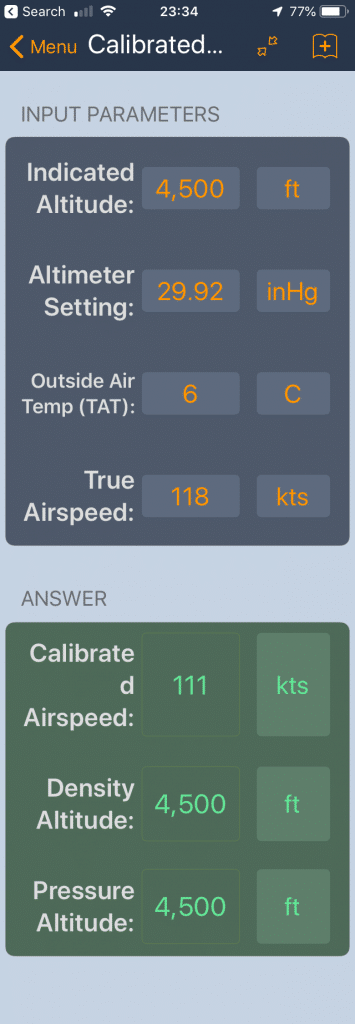
But let’s be mindful of how we get from TAS to IAS. If we’re careful to go by the definitions, it’s clear that TAS is… “CAS corrected for altitude and nonstandard temperature.” But some E6Bs simply use IAS and CAS as interchangeable terms, because a flight computer can’t make that correction. It’s specific to each model airplane. CAS is… “IAS corrected for installation error and instrument error.”
Cessna provides a chart for this purpose, also in Chapter 5.
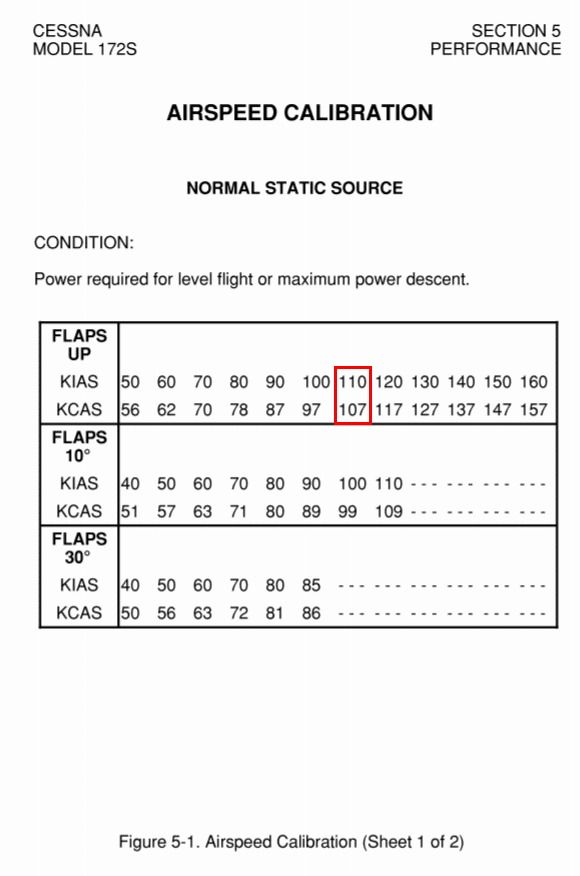
It’s clear that a 3 knot increase is required to determine KIAS from KCAS for the “Flaps Up” row, all the way from 87 KCAS to 117 KCAS. Therefore, if the aircraft is performing as planned, the airspeed indicator will display 114 KIAS (111 KCAS + 3 knots) at 4,500 feet with a 73% BHP power setting, which of course would be 2550 RPM as indicated on the tachometer.
Why this matters
Sure, these two simple questions can provide a great launching point into many of the knowledge elements contained within the Private and Commercial Pilot Cross-Country Flight Planning/Performance and Limitations tasks. But that’s not the only reason to broach the subject during a Practical Test.
Consider this scenario. A private pilot performs a short-field takeoff from a quiet country airport and launches on her cross-country flight… in the very same performance scenario described above. After reaching cruise altitude, she notes her airspeed indicator has settled at 93 KIAS — a full 25 knots less than planned. Despite 2550 RPM, an engine which feels and sounds strong, and proper indications in every other department, the plane is simply flying slow. Why?
And one more. A commercial pilot launches in his retractable gear Piper Arrow on a repositioning flight between two major airports. Although the aircraft only has 20 gallons of fuel on board, it’s a short repo flight and he calculates he’ll land with 35-40 minutes of fuel remaining. Yet, after departure, the aircraft’s ground speed seems to be much lower than what was planned. What happened?
If you guessed in the first scenario that the pilot forgot to retract flaps after takeoff, you’d be correct! And if you guessed that in the second, the pilot failed to retract the landing gear after takeoff, you’d be right twice. By knowing the aircraft’s performance and verifying it with the airspeed indicator, troubleshooting is possible. If the aircraft is performing as advertised in the power department, the only possible culprit is drag.
Summing it up
Examiners want to ensure that applicants for both certificate levels understand concepts as well as application. The Pilot’s Handbook of Aeronautical Knowledge and the Airplane Flying Handbook are excellent sources of information on these topics. Before your checkride, why not spend some time reading these handbooks and working some sample problems? Your confidence level will increase as you become adept at working with TAS, IAS, and CAS along with your aircraft performance charts and an E6B.
Safe Flights!
–Ryan

